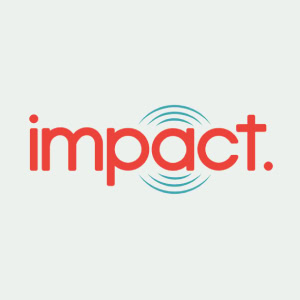Experience Muscle and Tendon Relief with Radial Shockwave Therapy in Perth
If you’re dealing with chronic pain or soft tissue injuries, radial shockwave therapy in Perth offers a non-invasive treatment. It supports healing and helps improve mobility without surgery or medication.
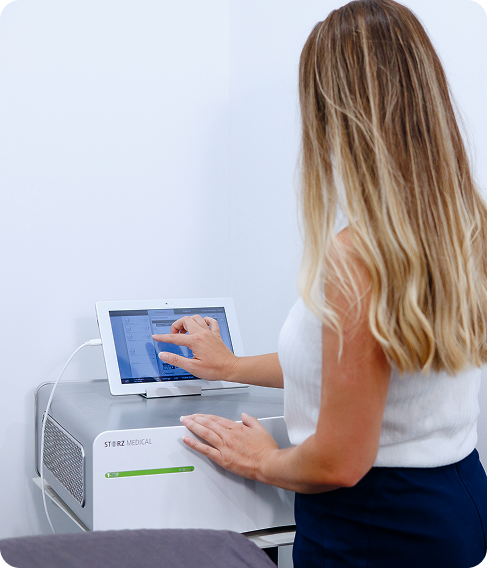
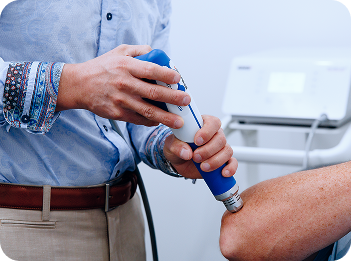
How Radial Shockwave Therapy Encourages Tissue Repair

Common Pain Conditions That May Benefit From Radial Shockwave Therapy
Radial shockwave therapy is often used for persistent tendon or soft tissue pain that hasn’t improved with stretching, exercise, or other conservative care. It’s especially helpful for conditions caused by overuse.
Plantar fasciitis
Plantar fasciitis causes heel pain, particularly when taking the first steps in the morning. Shockwave therapy can stimulate healing in the plantar fascia and reduce tension in the surrounding tissue.
Achilles tendinopathy
This condition affects the Achilles tendon, located at the back of the ankle. Radial shockwave therapy may help alleviate pain and stiffness by enhancing circulation and promoting tissue recovery.
Shoulder calcific tendinopathy
This involves calcium deposits forming in the tendons of your shoulder. Treatment may help soften deposits and reduce inflammation, making it easier to move and use your shoulder comfortably.
Tennis elbow
Tennis elbow affects the tendons on the outside of your elbow. Shockwave therapy may help reduce inflammation, relieve pain, and improve strength over time with repeated sessions.
Patellar tendinopathy
Often referred to as jumper’s knee, this condition causes pain just below the kneecap. Radial shockwave therapy may help reduce tendon strain and support long-term recovery.
Chronic hamstring injuries
Persistent hamstring pain can limit movement and physical activity. Shockwave therapy may help release tight tissue, reduce inflammation and irritation, and promote gradual healing in the affected area.
What to Expect During Your Treatment Session
Initial Evaluation and Consultation
Your therapist will ask about your symptoms, pain levels, and health history. They will examine the area and explain whether shockwave therapy may be a helpful option for you.
Preparing the Treatment
Area
A cool, conductive gel is applied to the skin to help transmit sound waves effectively. This step also enhances your comfort throughout the session.
Positioning the Applicator
The handheld device is placed over the affected area. Your therapist may adjust the pressure, depth, or angle based on your comfort and how your tissues respond.
Pulsed Acoustic Wave
Delivery
The device emits rhythmic tapping sensations. Some patients experience brief discomfort, but most find the sensation tolerable and the session manageable.
Your therapist will ask about your symptoms, pain levels, and health history. They will examine the area and explain whether shockwave therapy may be a helpful option for you.
A cool, conductive gel is applied to the skin to help transmit sound waves effectively. This step also enhances your comfort throughout the session.
The handheld device is placed over the affected area. Your therapist may adjust the pressure, depth, or angle based on your comfort and how your tissues respond.
The device emits rhythmic tapping sensations. Some patients experience brief discomfort, but most find the sensation tolerable and the session manageable.
Understanding the Potential Benefits and Limitations
Radial shockwave therapy may be helpful for some conditions, but it may not be for everyone. Understanding the possible benefits and limitations can help guide your expectations.
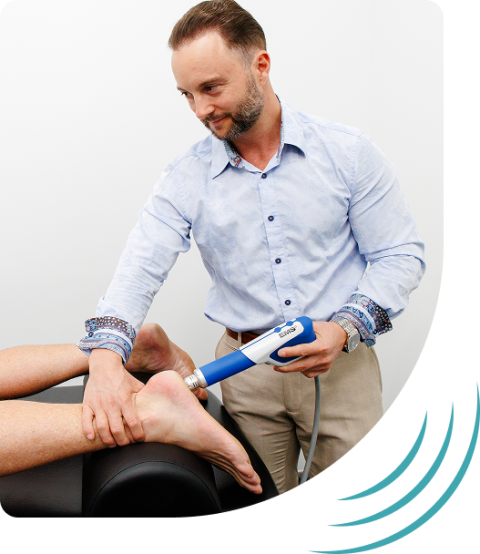
Potential benefits
- Some people notice pain relief within a few weeks of starting treatment. This can make everyday movement easier and improve comfort without relying on medications.
- Shockwave therapy may increase blood circulation and tissue activity in the area. These effects can promote recovery and help reduce inflammation over time.
- The process is non-invasive and does not involve injections or drugs. Many people choose it when other conservative therapies haven’t delivered enough relief.
Possible limitations
- Results differ from person to person and may take time. Some people may require multiple sessions or additional support, such as exercise or physical therapy.
- Mild discomfort is common during sessions and may continue briefly afterwards. It typically feels like a tapping or pressure sensation but usually resolves on its own.
- This therapy is not suitable for every type of pain or injury. Your therapist will evaluate your condition and suggest options that match your needs.
Who Are Ideal Candidates for Radial Shockwave Therapy
Radial shockwave therapy may be suitable for people with stubborn musculoskeletal pain that hasn’t improved with other treatments. It is most often recommended for the following situations.
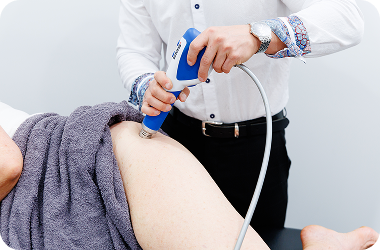
Chronic tendon or soft tissue pain
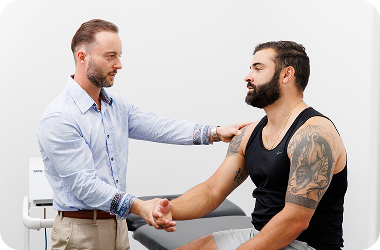
Limited improvement with conservative care
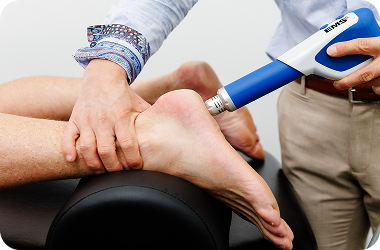
Looking to avoid surgery
Radial shockwave therapy is a non-surgical option. It may appeal to individuals exploring alternatives to injections or surgery for managing pain and improving function.
Why Choose Us for Radial Shockwave Therapy
Discover what sets our radial shockwave therapy apart—where evidence-based care meets human connection to support your healing journey.
Compassionate Care From Start Onward
Every consultation begins with listening. Our team takes the time to understand your story and explain every step of radial shockwave therapy. We aim to build trust, reduce anxiety, and create a supportive space where you feel heard, respected, and confident about your care plan—because healing starts with comfort and understanding.
Tailored Programs Built Around You
Radial shockwave therapy isn't a one-size-fits-all approach. We tailor each session to your body’s needs, whether you’re managing chronic heel pain or tendon discomfort. By carefully adjusting settings and treatment timing, we create a targeted plan that aligns with your specific goals, providing the right support at every stage of your recovery journey.
Proven Technology With Clinical Backing
We use Swiss-made radial devices supported by clinical research and backed by decades of development. Each treatment delivers consistent, controlled pulses designed to stimulate healing responses in soft tissues. It’s a technology trusted worldwide—and now made accessible in a local, caring environment right here in Perth.
A Whole-Body Healing Approach
Your body works as one unit—so we think your care should too. That’s why radial shockwave therapy is often combined with complementary treatments such as guided movement, dry needling, or soft tissue techniques. It’s a broader approach designed to support long-term improvements and help restore movement and comfort.
Book a Radial Shockwave Therapy Appointment to Enhance Your Recovery
If you’re dealing with ongoing pain or stiffness, our experienced team in Perth can help. Book a consultation today and discover whether radial shockwave therapy is the right option for you.
Get to Know Nicholas Wigger
Nicholas Wigger is a highly regarded physiotherapist in Perth with nearly two decades of clinical experience. He takes a modern, results-focused approach to musculoskeletal care, helping patients recover mobility and function using advanced technologies and hands-on techniques.
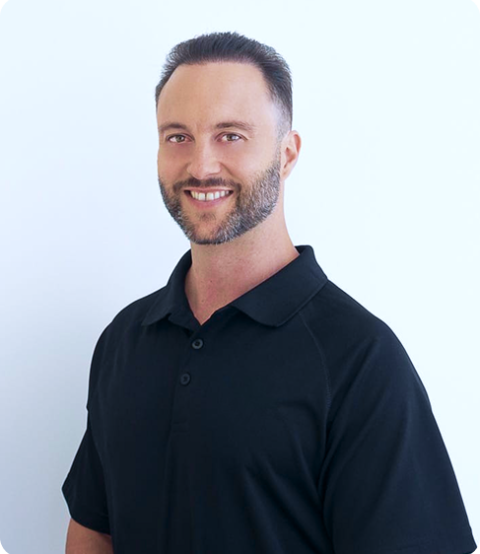
Nick Wigger
Advanced Level 3 GEMt Dry Needler
- MD, PhD
- 15+ Years
"I'm committed to using evidence-based techniques that show effective results without overcomplicating what good care should be."
Nick is widely recognised for his work in musculoskeletal therapy. He uses non-invasive modalities such as shockwave, magnetotransduction, and photobiomodulation to support recovery and long-term comfort.
Cost and Payment Options
Are you looking into the cost of shockwave therapy in Perth? We offer straightforward pricing and customised consultation options designed to support your treatment needs and maximise the value of each session.
Initial Consultation
Lorem ipsum dolor sit amet, consectetur adipiscing elit. Ut elit tellus, luctus nec ullamcorper mattis, pulvinar dapibus leo.
$179.00
AUD
- This 30-minute session includes a thorough health history taking and physical evaluation to gain a better understanding of your condition.
- Your therapist will discuss your symptoms, limitations, previous care, and what you're hoping to achieve.
- You'll receive a personalised care plan, outlining the next steps.
Standard Consultation
Lorem ipsum dolor sit amet, consectetur adipiscing elit. Ut elit tellus, luctus nec ullamcorper mattis, pulvinar dapibus leo.
$179.00
AUD
- This 15-minute session focuses on reviewing symptoms, tracking progress, and addressing any questions you may have.
- Your therapist may provide shockwave therapy or adjust your plan based on your current response.
- It helps maintain treatment consistency and promotes continuous improvement between sessions.
Extended Consultation
Lorem ipsum dolor sit amet, consectetur adipiscing elit. Ut elit tellus, luctus nec ullamcorper mattis, pulvinar dapibus leo.
$250.00
AUD
- This 30-minute session is ideal for addressing complex concerns or multiple areas that require attention in a single appointment.
- Your therapist will reassess symptoms, functional goals, and how your condition is changing.
- More time allows for deeper evaluation and refinements to your therapy plan.
Frequently Asked Questions About Radial Shockwave Therapy
Understanding the advantages of shockwave therapy can help you decide about this treatment option. Here are some common questions about shockwave therapy and insightful answers to clarify its key benefits and applications.
What is radial shockwave therapy, and how does it work?
Radial shockwave therapy in Perth is a non-invasive option used to support recovery from musculoskeletal conditions. It involves the use of sound waves directed into soft tissues such as tendons and ligaments.
Here’s how it works:
- Sound wave delivery:
A handheld device delivers acoustic pulses through the skin to the affected area. This method does not involve surgery, injections, or medication. - Improved circulation:
The sound waves may help boost local blood flow, allowing the body to respond more effectively to long-standing inflammation or restricted tissue function. - Cellular activation:
Shockwaves stimulate specific cells involved in tissue regeneration, potentially supporting improved mobility over time. - Used alongside movement therapy:
Many people who choose this non-invasive therapy in Perth combine it with exercises or physical guidance to support long-term outcomes.
Radial shockwave therapy may be considered when other conservative approaches have not provided sufficient relief from persistent soft tissue discomfort.
What are the side effects of radial shockwave therapy?
Radial shockwave therapy is considered safe for most people when applied by a qualified therapist. However, as with many physical therapies, some mild and short-term effects may occur after treatment.
Common side effects of shockwave therapy include:
- Mild discomfort or sensitivity:
Some individuals may experience temporary discomfort during or after the session. Another question often asked is, is shockwave therapy painful? Most describe the sensation as tolerable and short-lived. - Redness or local swelling:
The target area may become slightly red or puffy after the session. These changes usually subside within a day or two without the need for intervention. - Bruising or tenderness:
Bruising may occur in sensitive areas, especially where the tissues are thin. This usually improves over a few days. - Short-term increase in symptoms:
A brief flare-up in symptoms may occur within 24–48 hours as part of the body’s response. This often settles quickly with no lasting effect.
If you’re considering radial shockwave therapy in Perth, your therapist will explain what to expect from the treatment. They will also assess whether it’s suitable based on your symptoms and overall health.
As part of a broader care plan, non-invasive therapy in Perth may help support your recovery goals.
Who should avoid radial shockwave therapy?
While radial shockwave therapy is considered safe for many people, there are certain situations where it may not be recommended. Your therapist will assess your health history before beginning treatment.
People who may need to avoid radial shockwave therapy in Perth include the following:
- Pregnant individuals: Shockwave therapy is generally avoided during pregnancy. This is especially important in the abdominal or pelvic area, given the limited research confirming its safety.
- People with blood clotting disorders: Individuals with clotting issues or who take blood thinners may have a higher risk of bruising. There is also a chance of internal bleeding in sensitive areas.
- Patients with tumours or infections: Shockwaves are not used on areas with active infections or tumours. Your therapist will suggest alternative approaches if this approach is applicable to your condition.
Your provider will also discuss the differences between focused vs radial shockwave therapy. This distinction is important, as certain health conditions may respond better to one approach over the other based on treatment depth and intensity.
Is radial shockwave therapy very painful?
Many people ask, is shockwave therapy painful, especially during their first session? While experiences vary, most describe it as mildly uncomfortable rather than painful.
The sensation feels like repeated tapping or pressure on the area. It can be more noticeable over sensitive regions or where discomfort is already present.
If the sensation becomes too strong, your therapist can reduce the intensity of the pulses. Many people find that the feeling becomes more manageable within a few minutes.
Radial shockwave therapy Perth providers deliver pulses using a handheld device and often adjust the treatment based on your response and comfort.
The overall experience is generally brief, and most people are able to return to their usual activities straight after their appointment.
How long do the effects of radial shockwave therapy last?
A common question is how long does shockwave therapy last, especially for those seeking long-term relief. For many people using shockwave therapy for pain, the effects often develop gradually over several weeks, rather than immediately after treatment.
How long it lasts depends on several factors:
- Consistency of sessions: Regular appointments may lead to long-term comfort and results.
- Physical habits: Light movement or exercise can help maintain progress.
- Health and history: Age, activity levels, and the duration of the pain all play a role.
Some people seeking plantar fasciitis shockwave therapy in Perth report prolonged relief when therapy is combined with supportive care. The answer to how long does shockwave therapy last will vary, but gradual improvement is possible for many.
How many sessions of radial shockwave therapy are needed?
Radial shockwave therapy is often delivered across multiple sessions, with most people attending three to five appointments.
The number of sessions can vary depending on several important factors:
- Type and severity of your condition
Persistent discomfort, such as in heel pain, may require additional visits. For example, individuals undergoing plantar fasciitis shockwave therapy in Perth may follow a plan tailored to the duration of their symptoms and tissue sensitivity. - How your body responds to care
People receiving non-invasive therapy in Perth and elsewhere may respond differently. Some notice changes quickly, while others may need a longer course to experience noticeable benefits. - Treatment settings and therapist approach
The number of pulses and intensity level used can also influence the number of sessions required. A therapist may adjust these settings based on comfort and how symptoms change over time.
While individual responses vary, the goal is to achieve gradual improvements across a structured plan. So, does shockwave therapy work? Research indicates that it can be a beneficial component of care when combined with exercises or lifestyle guidance.
Can radial shockwave therapy make you feel tired or unwell?
Radial shockwave therapy for pain is a non-invasive option used by many for relief. While it’s generally well-tolerated, some people may experience mild side effects of shockwave therapy after a session.
Feeling a bit tired, sore, or slightly unwell is possible, especially if your body is reacting to the physical stimulation. These effects are usually short-term and may include the following:
- Tiredness or fatigue: Some people feel a bit drained after a session, possibly because their body is adjusting or due to the physical response of muscle recovery.
- Mild discomfort or tenderness: The target area may feel sore for a day or two, similar to how you might feel after exercising.
- Bruising or redness: These are occasional and usually go away quickly.
These side effects of shockwave therapy are not uncommon and usually settle without the need for further care. It’s your body’s way of responding to the treatment as part of the healing process.
What should you not do after radial shockwave therapy?
After a session of shockwave therapy for pain, it’s important to give your body time to respond and recover. While many wonder does shockwave therapy work, what you do after the treatment plays a role in your experience.
Here are a few things to avoid right after a session:
- Avoid intense physical activity: Refrain from high-impact exercises or heavy lifting for 24–48 hours. Light movement is acceptable, but take care not to place excessive strain on the affected area.
- Avoid using ice or anti-inflammatory medications immediately: These may interfere with your body’s natural healing response, a key component of how shockwave therapy for pain works.
- Avoid alcohol or smoking: These can slow down recovery and may impact how your body responds to the treatment.
- Don’t schedule another treatment too soon: Allow your body adequate rest between sessions to promote healing. Your therapist will advise on the most suitable timing for your next appointment, taking into account your condition and response to treatment.
A common consideration when asking does shockwave therapy work is how well you care for the area afterwards. Avoiding strain and giving your body time to respond can influence how effective the therapy feels.
Does Medicare cover radial shockwave therapy?
Radial shockwave therapy is not directly listed under the Medicare Benefits Schedule. However, when provided by a physiotherapist, it may be included in a consultation that forms part of a GP Chronic Disease Management (CDM) plan. In these cases, Medicare may contribute to the physiotherapy consultation cost, though the device treatment itself is typically an out-of-pocket service.
If you’d like to understand how this might affect the cost of shockwave therapy in Perth, our team at Impact Shockwave Therapy & Technology Centre is here to help. We can guide you through your options and clarify any referral requirements.
What is the difference between radial and focused shockwave therapy?
When comparing focused vs radial shockwave therapy, the main difference lies in how deeply the sound waves reach and how the energy spreads through the tissue.
Radial shockwave therapy disperses energy over a wider area and stays closer to the surface. It’s often used for soft tissue discomfort, such as tendon issues or muscle tension. This approach is commonly offered in clinics that provide radial shockwave therapy in Perth.
Focused shockwave therapy, on the other hand, targets deeper tissues with concentrated energy. It’s generally used when a more precise application is needed, such as for deeper joint or bone-related concerns.
Understanding the difference between focused vs radial shockwave treatment can help you discuss the right option for your needs with your healthcare provider.
Does radial shockwave therapy reduce inflammation?
Yes, radial shockwave therapy may help reduce inflammation in some cases. The gentle pulses delivered during treatment are thought to improve circulation. This can trigger the body’s natural healing responses, which may ease swelling and discomfort over time.
Clinics offering radial shockwave therapy in Perth often use it to support recovery from soft tissue conditions, such as tendon issues or plantar fasciitis.
While it might not replace other treatment options entirely, it can form part of a care plan for long-term relief. Everyone responds differently, so seek a healthcare provider to guide you on whether this therapy is suitable for you.
How deep does radial shockwave therapy penetrate into the tissue?
Radial shockwave therapy generally reaches soft tissues up to about 3–4 centimetres below the skin. It’s designed to cover broader areas rather than target a single point.
This makes it useful for addressing surface-level conditions, such as heel pain, tendon issues, or muscle tightness. It differs from focused shockwave therapy, which can go deeper and concentrate energy on smaller areas.
For those exploring radial shockwave therapy in Perth, this treatment is commonly used to manage discomfort in areas such as the feet, knees, or shoulders. If a more targeted approach is needed, your provider may recommend an alternative strategy.
Find More Contact Information Here
Contact us today to discover more about our services and how we can assist you. Our friendly staff is available to answer any questions and schedule your appointments.
Location
Surgeons House, 162 Cambridge Street, West Leederville WA
Email Us
Call Us
Working Hours
Tuesday to Friday: 9:00 AM - 5:00 PM
Saturday to Monday: CLOSED
